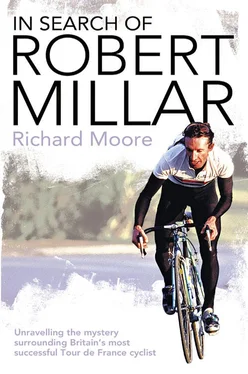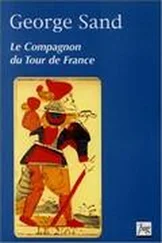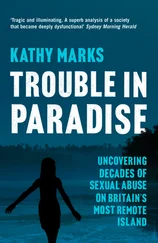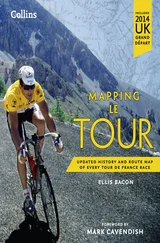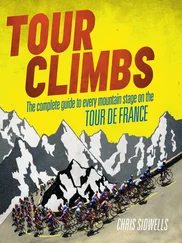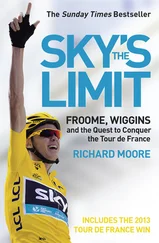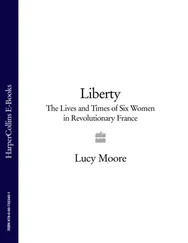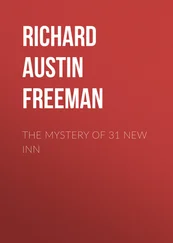Surrounding Glasgow in all directions were more or less traffic-free roads that skirted spectacular lochs, climbed remote hills, hugged the coast, and delved into secluded parts of the country, all of which were perfect for cycling. Large groups of club cyclists began to meet on the outskirts of the city on Saturday and Sunday mornings to explore these roads, usually stopping for a ‘drum-up’ – a fire would be lit upon which soup could be heated and tea brewed – by the banks of Loch Lomond. Many of those who were drawn to cycling preferred solitude to crowds, such as football crowds. They also preferred green space to the urban environment. ‘Off to find some green bits,’ Millar would remark later of a 1980 photograph that showed him riding through Glasgow, heading out on a training ride. Cycling provided, literally and metaphorically, an escape for those such as Millar and another famous Glaswegian who eventually managed to move away from the city and his working-class roots, the comedian Billy Connolly.
For Connolly, humour was an effective way of surviving life as an apprentice welder in the Clyde shipyards, as well as eventually providing his means of escape. But cycling also provided him with more fleeting ‘escapes’. In an interview with The Independent in 2000, Connolly, agreeing with the description of himself as a ‘sociable loner’, explained, ‘I was never a joiner [of clubs or organizations]. Even when I cycled I never joined a cycling club, I just cycled around on my own and sometimes joined lines of other cyclists.’ He was referring to the club runs, which were organized and designed for socializing, down to the fact that riders went two abreast, as an aid to conversation. Indeed, contrary to the image of the cyclist as only a loner or escape artist, cycling, especially club cycling, was often a social activity that appealed to sociable types – or ‘sociable loners’, perhaps. The sport could therefore satisfy two apparently conflicting sides of a personality, the desire both for solitude and for mixing with others, especially those who were like-minded.
The proliferation of clubs reflected the interest in cycling in Glasgow at this time. There were touring clubs and racing clubs, men-only clubs and clubs for Christians, where Sunday rides would include a visit to church. The 1960s and 1970s constituted a peak period; the club scene has perhaps never been stronger. Jimmy Dorward, a leading light in this club scene for more than five decades, compares the clubs to clans. When, as a young boy, he showed an interest in joining a club he was told simply to ride up to Loch Lomond on a Sunday and find the spot where that club met. Each club had a different and clearly defined ‘drum-up’ spot by the banks of the loch. Dorward went in search of the Douglas club but couldn’t find them. ‘I found the Clarion instead and ended up joining them,’ he recalls. ‘The Douglas, which had been a very strong club, took a nosedive after that.’ Smiling, he adds: ‘But I don’t think that had anything to do with me not joining them.
‘Cycling was a way of life for a lot of people. It was more than a sport, and there was a tremendous social aspect. If you wanted to join a club you just turned up at the “drum” and someone would come and speak to you. If the newcomer got dropped [left behind] there was always someone who’d look out for them and go back for them. After the drum-up the scraps would start; in these big groups of thirty, forty or fifty, we’d race back to Glasgow and it would be every man for himself. But someone would still look out for the newcomer. You’d say, “Just stay with me, I’ll get you back.” And there was tremendous club loyalty. If you were even seen cycling with another club you’d be asked what you were doing. You’d be seen as a traitor.’
One of Robert Millar’s first cycling expeditions, before he became involved in the club scene, was when he was only 11, in the company of three friends, among them Willie Gibb, who had been inspired to take up cycling by the example of his racing father. The youngsters cycled away from Pollokshaws in the direction of East Kilbride, around ten miles away, though Gibb turned home early while the remaining trio of intrepid 11-year-olds continued in an easterly direction, with the benefit of a generous tailwind. It wasn’t just the stiff headwind that made things difficult on the way back. There was also the matter of taking the wrong road, which meant they came back into Glasgow through Rutherglen. To them, it might as well have been a different city. When they managed to stumble upon Bridgeton they were able to find their way home, late, but with their parents none the wiser.
It was with Gibb and Tom Brodie that Millar began to cycle on a more regular basis. ‘We used to run about on bikes that were like Raleigh Choppers,’ remembers Gibb. ‘We were on bikes all the time.’ The three young cyclists began to venture out of the city with greater frequency. They were beginning to enjoy going far and fast, and an element of competition was being introduced, not through racing one another but thanks to the buses that trundled up and down the main road to Ayr, a seaside town thirty miles south of Glasgow. ‘At that time the buses were pretty slow,’ explains Gibb, ‘so we used to tuck in behind them, sheltering in their slipstream. They could probably get up to about forty miles an hour, but they had no acceleration. So you could get in behind them as they left the bus stop and sit behind them all the way to Kilmarnock [twenty miles away] or even as far as Ayr, then turn around and catch another bus back to Glasgow.’
The bicycles were put to other uses as well, such as fishing. Illegal fishing, naturally. Gibb knew of a small loch owned by a syndicate comprising some of the movers and shakers of Glasgow society – ‘legal folk, judges, people like that’. ‘We’d go up and do all-nighters, especially during the school holidays,’ he recalls. ‘It would get light about three in the morning. We used to cycle there with our fishing rods strapped to the top tube of our bikes, and then hide the bikes in the long reeds. The loch was about eight or nine miles from where we lived. We caught loads of good-sized brown trout. There was an old folks’ home near where I lived and I’d keep a couple of fish myself then give the rest to the old folks. I don’t know what Robert did with his. The old folk never asked where they came from.’
One of the early stories that attached itself to Millar as he climbed the cycling ladder was the claim that he had become hooked on the sport of cycling after seeing the Tour de France on a television in a shop window. It’s a story that has been told and retold, but it isn’t true. In fact, Millar set the record straight as early as 1984. ‘That [story] upset me because it made it sound as if I lived in a cave,’ he said. ‘It made out that as I came from Glasgow I was poor and depressed.’ As Gibb confirms, it wasn’t by watching the Tour de France but simply through riding his bike with friends that Millar became interested in the sport. In the same interview in 1984, in Cycling , Millar described his first bike as ‘a wreck: it was made from plumber’s tubing. I used to paint it every six months or so.’
When they were 15, Millar, Gibb and Brodie enquired about joining a cycling club at Riddle Cycles, a shop situated in the shadows of Hampden Park, the national football stadium, that was owned by a couple of elderly brothers, always immaculately turned out in brown overalls. It was the Eagle Road Club the trio had their hearts set on; they were impatient to race, and the Eagle had a reputation as one of Glasgow’s top racing clubs. The Riddles put them in touch with Jim Paton, the Eagle Road Club’s treasurer, but when Paton met them they were left, according to Gibb, feeling ‘dismayed’. Paton told them that to go straight into a racing club would be too big a leap; to go from chasing buses up the Ayr road to mixing it with racing men would be sheer folly. But Paton wasn’t discouraging. He was also a member of the Cyclists’ Touring Club, and advised that the boys join another local club, the CTC-affiliated Glenmarnock Wheelers, instead. They might have felt disappointed and frustrated, but they took Paton’s advice.
Читать дальше
